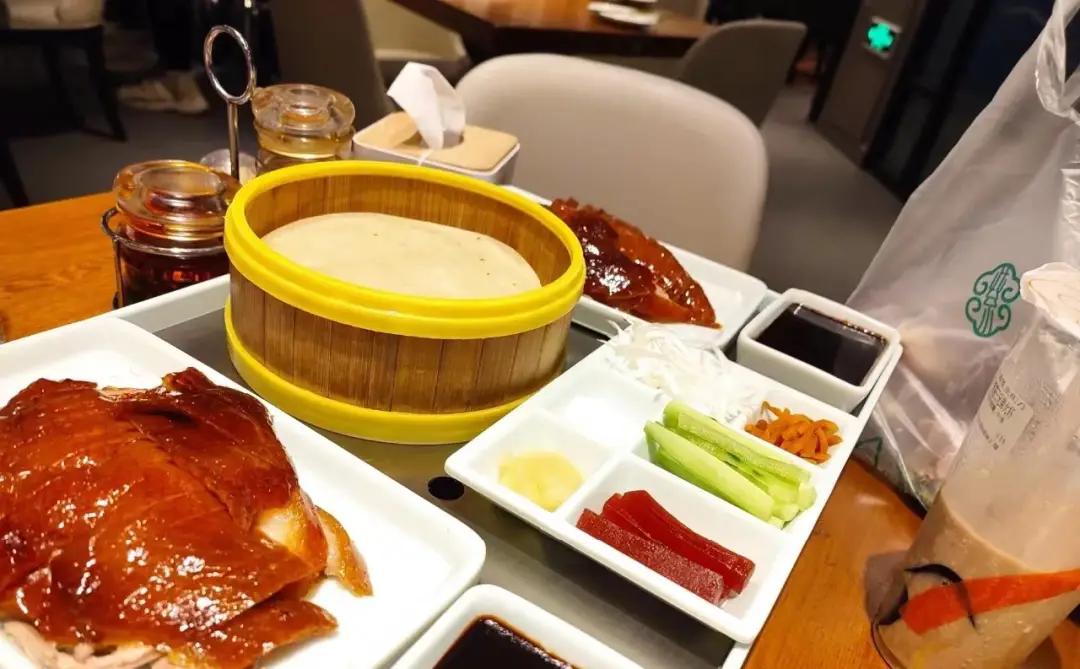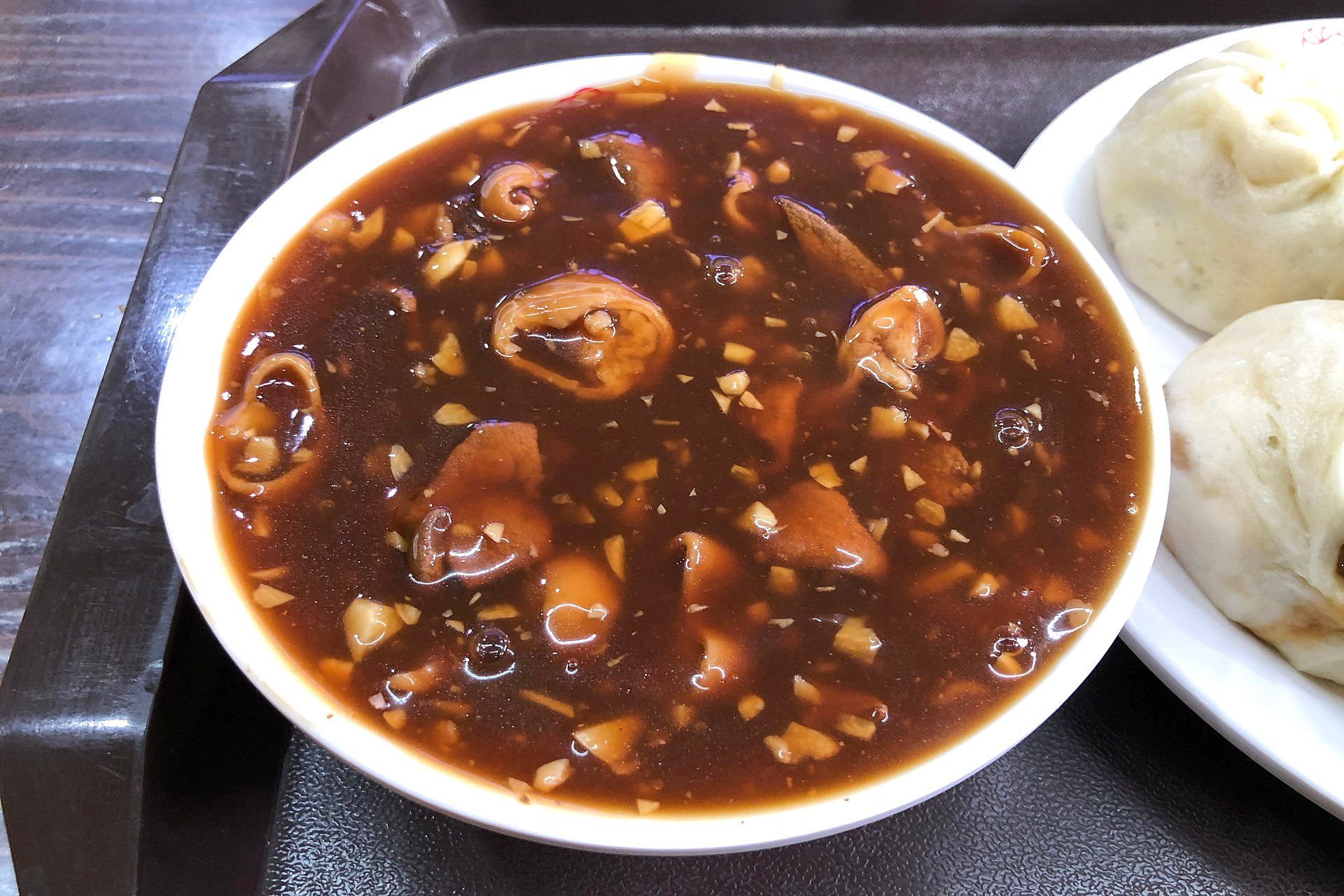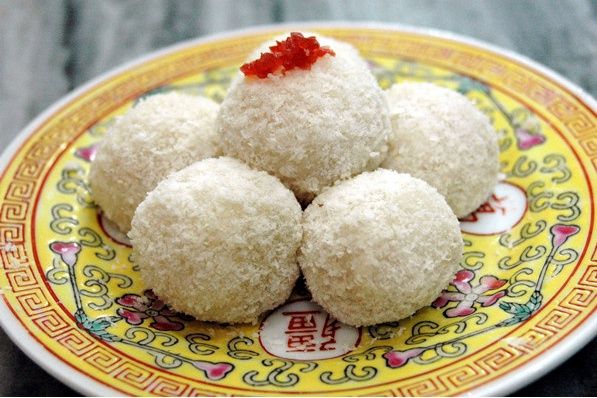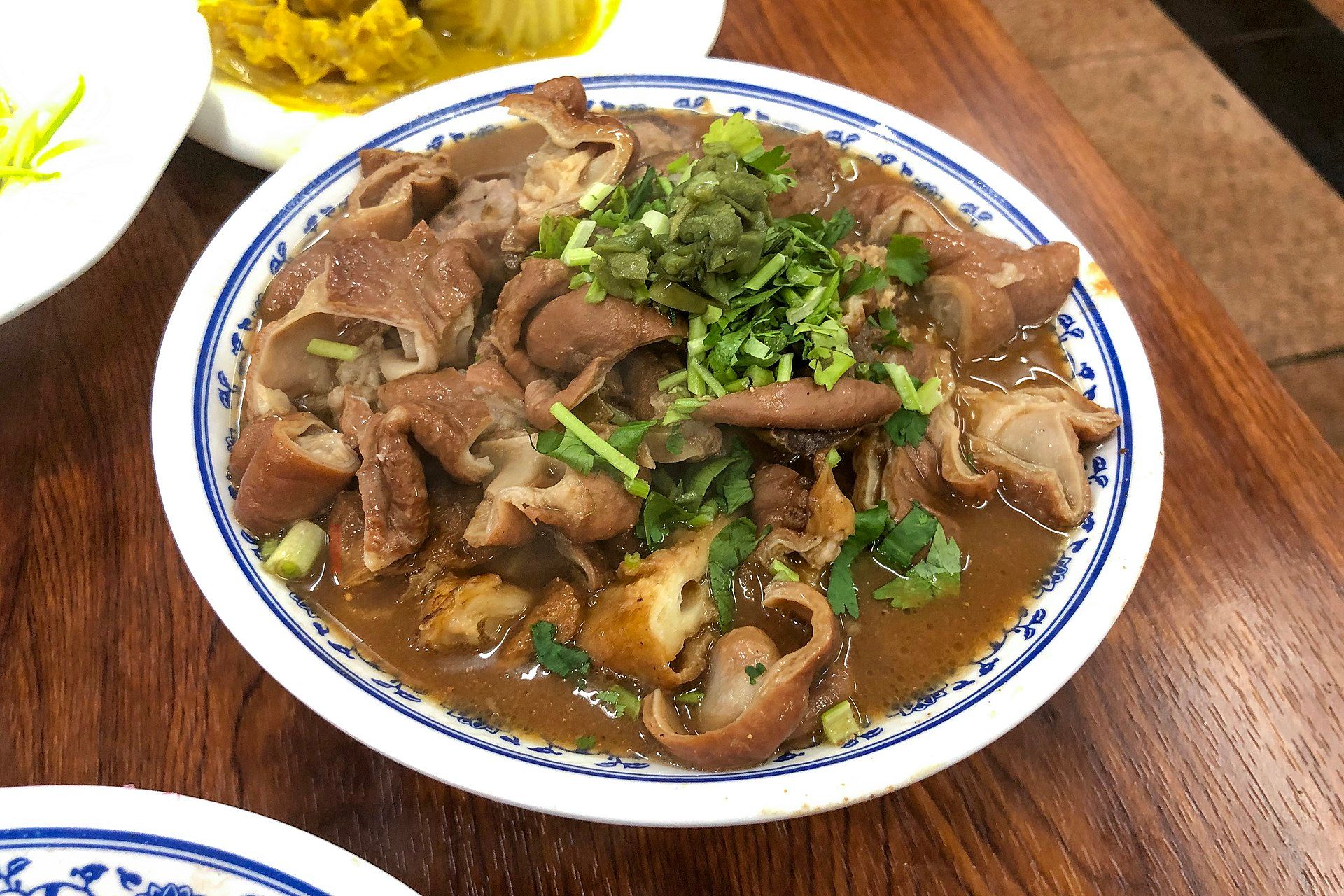北京で絶対に食べるべき食べ物トップ6
北京で何を食べるべきか調べよう!
まとめ
北京の食べ物といえば、おそらく真っ先に思い浮かぶのは、有名な北京ダックでしょう。北京ダックは絶対に食べるべき料理ですが、北京には他にもさまざまな料理や珍味があり、あなたを待っています。北京への旅行を計画していて、ぜひ試してみたい地元の名物料理は何かお悩みですか? それでは見ていきましょう!
1. 北京ダック

北京ダックは、おそらく誰もが北京で必ず食べたい食べ物のリストのトップに挙げられるでしょう。北京ダックは間違いなく北京の最も象徴的な料理であり、国際的に高い評価を得ている料理の傑作です。
北京ダックは、パリパリの皮と儀式的な提供方法で知られています。実際には肉よりも皮が多いアヒルを、甘いソース、ネギ、キュウリと一緒に薄いラップで包みます。
北京ダックは北京の多くのレストランで見つけられるだけでなく、多くの屋台や土産物店でも見かけられます。しかし、最も有名な北京ダックをお探しなら、全聚德(クアンジュデ) または 便宜坊 (BianYiFang)。
全聚徳では、鴨は長時間、直火に吊るして焼かれます。焼くのに使う木材のおかげで、焼いた鴨には木のフルーティーな香りがします。この方法で調理された鴨は、よりカリカリに仕上がります。一方、扁易坊は、シチューオーブンで焼いた鴨の代名詞です。直火で焼くのではなく、加熱したオーブンで調理します。このため、焼いた鴨はより柔らかく、風味豊かになります。
もう一つの選択肢は、地元の人に強く推奨されており、紫禁城、 は 四季民福烤鸭店 (四季民福烤鸭店)。
2. 炒めレバー(炒肝)

レバー炒め、読み方はチャオ・ガン中国語では北京の伝統的な料理であり、ラオス北京13日、これは北京で絶対に味わわなければならない 13 種類の軽食のリストです。伝統的な軽食ではありますが、この料理は、特に豚の内臓を食べない人にとっては、決して万人向けではありません。
「レバー炒め」という名前ですが、その名前は誤解を招きます。この料理にはレバーだけでなく、実際には豚の腸などの内臓も含まれています。また、名前には「炒める」とありますが、実際には豚のレバーを煮込んでいます。
豚のレバーと腸は、かなりデンプン質のコーヒー色のスープに浸され、ニンニクのみじん切りが添えられています。確かに、見た目も味も食欲をそそるものではありません。しかし、見た目より味は断然おいしいです。この料理は香りがよく、ハーブの味がします。通常はパンと一緒に食べられます。
このスナックは多くのレストランや屋台で見つけることができ、ヤオ・ジ・チャオ・ガン そして 天星菊最も推奨されるもの。
3. アイウォウォ(艾窝窝)

アイウォウォは、明朝時代に生まれた伝統的なスナックです。主に蒸したもち米を丸めてボール状にし、アーモンド、ゴマ、カボチャの種、プラム、サンザシゼリー、砂糖などの具材を詰めて作られます。さまざまな具材が入っているため、あらゆる年齢層に人気のスナックです。
もともとは王室の食べ物だったこの伝統的なデザートは、今では伝統的なスナックを販売する多くの屋台で見つけることができます。最高のアイウォウォやその他の伝統的なスナックをお求めなら、近くのスナックショップへお越しください。護国寺ぜひ、他のスナックも試してみてください。ルー・ダ・グン(驴打滚)とワン・ドウ・ファン(豌豆黄)は、どちらも北京の伝統的な軽食として非常にお勧めです。
4. 炸酱面(ジャージャンミエン)
 またはNo. 69 方章昌 張晨江面(方砖厂69号炸酱面)。
5. 緑豆ジュース(豆汁)


魯肉火焼は北京の南横街発祥の伝統的な北京の屋台料理です。この料理は主に豚の内臓から作られ、豚のレバー、腸、肺が揚げ豆腐と一緒に煮込みソースで調理され、ニンニクとコリアンダーで飾られています。
この料理は非常に風味豊かで、肉は柔らかくなるまで調理されており、地元の人々にとても人気があります。
最高の魯竹火韶を楽しむには、**XiaoChangChen (小肠陈)**は100年以上の歴史を持つ老舗の店で、魯珠火韶で有名です。または、陳吉 陸珠 暁昌 **(陈记卤煮小肠)**こちらも非常に人気があります。ピーク時には長い行列が予想されるので、陳吉 陸珠 暁昌、少し早めに行った方がいいかもしれません!
中国向けNomad Travel eSIMで北京でも接続を維持
つながりを保つ中国向けノマドトラベルeSIM北京の名物料理をお腹いっぱい味わいながら、NomadのeSIMで世界中の170以上の目的地で手頃な価格のデータeSIM—中国も含む。
さまざまなローカル、地域、グローバル データ プランから選択し、飛行前に eSIM を購入してインストールしておけば、到着後数分でモバイル ネットワークに接続できます。旅行中にデータが不足した場合は、Nomad アプリでアドオンを購入するだけです。
北京への旅行を計画中ですか?中国旅行eSIM旅行中も接続を維持できます。